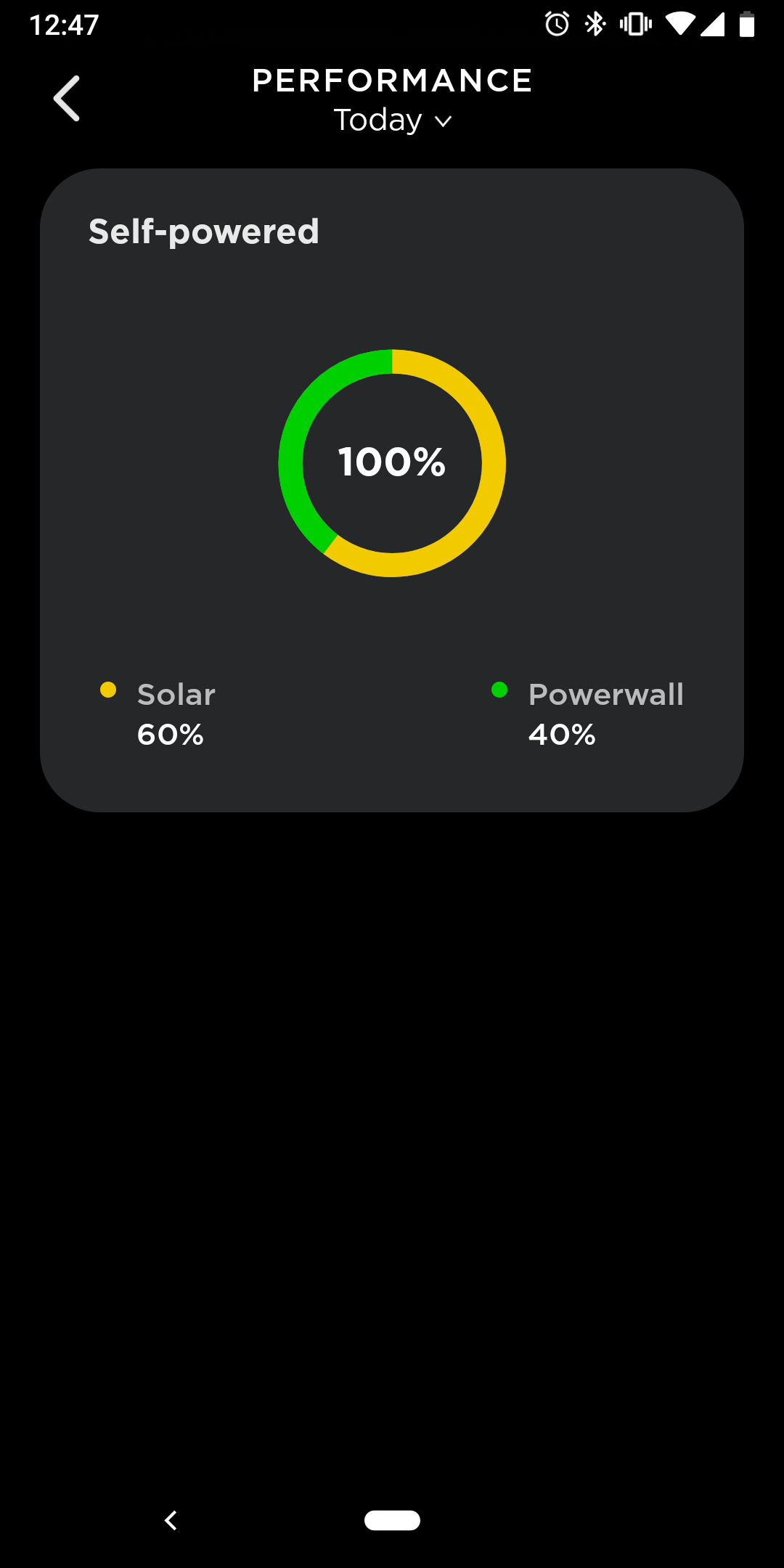Since we moved house, I’ve been really excited about the truly smart Smart Home devices that have become available to us. Going beyond toothbrushes with bluetooth to things that make a material difference to how the home and our lives fundamentally work.
The first change we’ve made is going fully solar. It took a year all told to go from signing the agreement to buy and install the solar through to actually getting permission from the city and PG&E to turn the system on and have it actually work (not to mention the expense) but it’s been worth it.
It’ll vary from state to country how you go about getting solar, but in California we worked with SolarCity who specialise in residential solar installations and were recently acquired by Tesla (and will eventually no longer be identified under the SolarCity name). As such, we also decided that not only did we want to be solar powered during the day, but we wanted to store energy so we could also be solar-powered over night and in electrical outages, so we also installed two Tesla Powerwalls in our garage (the sharp eyed amongst you may have spotted them lurking in the gloom of the garage in the Miracle-grow post a few weeks back).
Solar alone doesn’t necessarily make this system smart, but the PowerWalls are where things get fun. They come with an app that allow a few insights and controls.
They’re a bit of a prepper’s dream. You can configure how much battery to always keep in backup incase of an outage as well as go into grid-only mode if a storm is heading your way to preserve maximum battery power availability. The live updates to show how much energy is in use, how full the batteries are and the when fill-up times are at their most optimal should you prefer to use more energy-hungry devices only during direct-solar hours.
Since we’re now heading into summer time, we’re hitting our peak solar capacity. We’re regularly filling our batteries, powering the house and still putting about a third of our generated power back into the grid (check out the weekly graph of energy usage screenshot). We planned for excess capacity so we can make further power-hungry additions to the house at some point (like AC or upgrading our plug-in hybrid to a full-electric car).
Thank you, sun!





